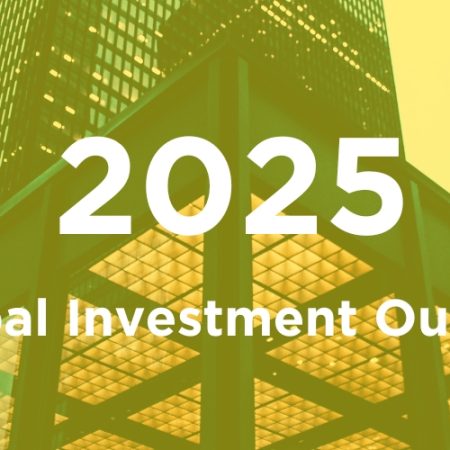As we anticipate a new real estate cycle, we should keep in mind that history does not repeat itself. The previous cycle, rising from the ashes of the global financial crisis, will be remembered as a golden age for investors. But those hoping to ride the same train again are likely to be disappointed. Covid-19 triggered a paradigm shift in the macroeconomic landscape: a new playbook is required to address three challenges in the years ahead.
First, accelerating structural change is driving an increase in volatility. The future looks more uncertain, with greater dispersion in asset returns and a shorter business cycle. Second, a material rebasing of interest rates is under way. Third, the global economy is returning to an environment of secular stagnation, in which an ageing population and shrinking labour force result in weak private demand.
The real estate market is also evolving. “Capital markets are larger, more transparent and more sophisticated, implying greater competition and fewer opportunities to make super-normal profits,” says Rasheed Hassan, Head of Global Cross Border Investment, Savills. “Institutional allocations have stabilised, making new capital scarcer, and tenant requirements are becoming more diverse and complex. Tenants are demanding greater flexibility in the buildings they occupy and the landlords they contract with.”
Long term government bond yields
Source: Savills Research using Oxford Economics
The real estate market is also evolving. Capital markets are larger, more transparent and more sophisticated, implying greater competition and fewer opportunities to make super-normal profits. Institutional allocations have stabilised, making new capital scarcer, and tenant requirements are becoming more diverse and complex. Tenants are demanding greater flexibility in the buildings they occupy and the landlords they contract with.
Investors want capital value growth – but it’s not guaranteed
These challenges are not insurmountable. But this new environment requires a more proactive investment approach. To understand why, it is worth considering first why investors buy real estate.
For multi-asset investors, the oft-quoted reason is diversification. Historically, real estate has offered solid returns uncorrelated with other asset classes – sitting between equities and bonds by providing both regular income and capital growth. But while investors often emphasise the importance of steady rental income, it is growth in capital values that ensures their loyalty.
This will be even more important in the years ahead. With interest rates rebasing higher, the ‘income-hungry’ investor now has options across fixed income. Investment grade corporate bonds, for example, currently offer yields to maturity of 5-6% in the US and 3-4% in the euro area – not dissimilar to the initial yield on prime real estate, but with the added advantage of greater liquidity and a very low default rate. Higher interest rates also reduce the scope for investors to leverage their income returns by loading up on cheap debt.
Therefore, buying real estate now requires greater conviction on the outlook for capital values. There are two main drivers of capital values: yield compression and rental growth. Neither is guaranteed in this cycle.
First, property yields, which move in line with long-term government bond yields plus a risk premium. Analysis of the last two major real estate cycles shows how both bond yields and the risk premium impacted returns. In 2002-07, we saw a decline in risk premiums underpinned by weight of money, risk-on financial markets and strong economic growth. In 2010-19, the key factor was falling bond yields, driven by expanding central bank balance sheets and zero interest-rate policy.
US all-property capital value growth driven by yield movements
Source: Savills Research using MSCI
Looking ahead, interest rates are already at or close to where they are expected to settle, even though central banks continue to ease policy rates. Equally, risk premiums are very thin because property yields have not kept pace with rising bond yields. Neither provides significant room for yield compression in the recovery.
Where there is space for risk premiums to come in, this will happen quickly. Indeed, we have already seen declines in selected markets and sectors, driven by competitive bidding. This largely explains why the more opportunistic investors, such as private equity, have been increasingly active over the past 12 months.
Real estate risk premiums are at or close to historic lows
Source: Savills Research using MSCI and Macrobond. Risk premium based on the difference between all-property yields and the 10 year government bond yield.
Without yield compression, rising capital values must be driven by rental growth. But here too, the outlook is mixed. Real estate is a GDP-linked asset class, and so rents are broadly tied to the pace of economic growth. A continued slowdown in global growth therefore implies a weaker outlook for rents.
As a result, passive investment strategies are likely to underperform in this cycle, and investors will need to work harder to achieve the returns they have become accustomed to. One approach is to move up the risk curve. Value-add and opportunistic investors will continue to look for dislocations in the market, explore more nascent sectors and geographies and pursue opportunities to refurbish or repurpose existing properties as strategies to generate value.
But this is an increasingly crowded space, and one that does not suit many of the more risk-averse institutional investors that underpin global real estate capital markets. Furthermore, higher-risk investors rely on these institutions for their exit strategy, so a hollowing out of core investors would have a ripple effect across the whole market.
UK all-property market rental growth tracks GDP over the long term
Source: Savills Research using MSCI and Oxford Economics
Another alternative is to develop strategies more likely to deliver the income growth required to support capital values. Investors are coalescing around a broad approach to achieving this.
An alternative, high-level view: thematic investing
From a top-down perspective, ‘thematic’ strategies are increasingly popular. In times of uncertainty, investors often look for strategies that can transcend the business cycle. Thematic funds aim to do this by focusing on long-term, structural drivers of economic growth rather than traditional sectors and geographies.
Many of these are relatively predictable. We know, for example, that rising life expectancy and slowing birth rates mean the world’s population is ageing. Even where an outcome is less obvious, there are still high-conviction themes: artificial intelligence, for example, could have a wide range of impacts on society, but in any case, it requires more data processing and storage capacity. As a factor of production, real estate has an integral role in shaping all megatrends, whether facilitating continued growth in urban populations or mitigating the effects of man-made climate change.
This shift to thematic investing is not unique to real estate; according to Morningstar, assets under management in global thematic equity funds have doubled over the past five years, reaching US$562bn in mid-2024. Much of this growth occurred in the aftermath of Covid-19, which provided a catalyst for the acceleration in structural change that has helped to drive the popularity of thematic investing.
Nor is thematic investing a new phenomenon. It has already underpinned a shift in real estate allocations, with structural demand drivers favouring ‘beds and sheds’. Meanwhile, the investment universe is growing. Unencumbered by a narrow sector focus, investors are exploring further assets across the living sector (student, senior, co-living), as well as data centres, healthcare, education and self-storage. The market for these ‘alternative’ sectors has risen from less than 4% of global investment in 2008 to nearly 13% last year.
All real estate is operational: investors should consider occupiers’ needs
With a thematic top-down strategy comes a more active bottom-up approach. Part of this is concerned with stock selection and executing a less prescriptive strategy. Stock selection has always been crucial in real estate, as it is difficult to gain broad exposure to the asset class in the way investors can in public markets. More importantly, investors will need to manage their assets more actively in future, due to the growing realisation that ‘all real estate is operational.’
With operational real estate, returns are strongly correlated with the performance of the occupier. Real estate is inherently an operationally intensive business – certain revenues and costs are determined by the performance of buildings and tenants. But much of the operational risk has in the past been pushed back to the tenant (e.g., via Full Repair & Insurance leases, where the tenant assumes responsibility for many operational costs), or outsourced (e.g., via rent collection and building upkeep).
This is beginning to change. Thematic investing is based in part on the belief that real estate should no longer be considered a commoditised product to be traded or leased. Instead, it represents a blend of product and service, adding value to the tenant’s business and supporting the wellbeing of occupiers and those in close proximity.
By considering the tenant experience, investors can design spaces that align better with their requirements – whether it be to boost attendance and productivity (more collaborative space or better amenities), or help tenants achieve wider corporate ambitions. Investors must follow the occupiers in real estate: creating desirable buildings will naturally support stronger returns and reduce obsolescence risk.
Meanwhile, value creation is moving beyond the design and use of physical space to the provision of additional services to tenants (‘real-estate-as-a-service’). This can create new revenue streams and diversify income sources. The ‘hotelification’ of the office – adopting a more consumer-centric approach borrowed from hospitality – is a good example. Meanwhile, smart buildings and the better use of data can improve efficiency and reduce costs.
This approach requires greater collaboration with tenants so that investors can respond to changing demands. Closer landlord-tenant relationships should foster customer loyalty – delivering the pricing power that can support rising rents and capital values as well as reducing obsolescence risk (especially in an environment of shorter leases).
The major capital allocators are alive to this trend. Institutional investors identify operating platforms that prioritise service-based propositions as key entry points to real estate markets over the next two years. The next real estate cycle is in its infancy, but some of its outlines are already becoming clear.
Expected changes to institutional real estate allocations in Europe over the next two years
Source: Savills Research using INREV Investment Intentions Survey 2025
ALEX JEFFREY
CHIEF EXECUTIVE, SAVILLS INVESTMENT MANAGEMENT
The last few years have been pretty subdued from a capital markets perspective, with many institutions choosing to sit on the sidelines. We have however seen some movement back into the market since mid-2024, after the US Fed started moving, and with some electoral questions around the world getting answered.
But we’re not expecting a sharp V-shaped recovery in activity. This is partly because interest rates are unlikely to come down rapidly – given there is some stubborn inflation left in the system – while in many major markets, there remains a lack of economic growth. As such, institutions and fund managers need more to accelerate a return back into the market.
Looking further ahead, allocations to real estate are no longer increasing, but have plateaued globally on average. This is a significant change from the last decade or so when the market enjoyed the twin tailwinds of rising target allocations and investors being under-allocated to real estate.
This fundamentally changes the mindset and puts the focus on having genuine sector operational expertise. Investors can no longer rely on yield compression – though they may get it if they can catch the right point in the cycle. They will need to deliver returns from the underlying yield and whatever they can do to improve the asset and make it attractive to occupiers.



